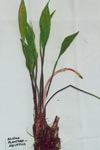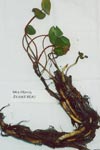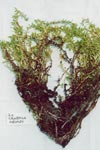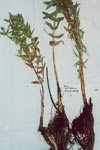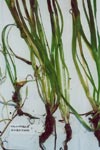Frog-friendly garden of the year 2002
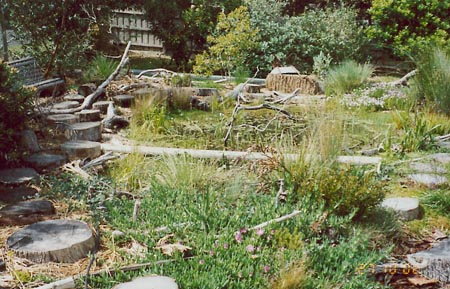
Two and a half years ago, a photograph of this location would show only a large empty patch of grass in a Mornington Peninsula backyard. Today it shows the first Frog Watch Frog-friendly Garden of the Year.
The doting owner of this garden and the man responsible for the transformation is Peter Hohaus. He is of course assisted by his family, in particular his son Daniel. Congratulations to the Hohaus family.
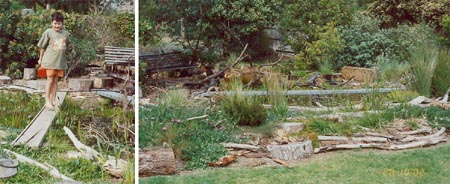
Peter has been a long time friend of the Victorian Frog Group and the Frog Watch program - we even used an early photograph of Peter's pond on the front cover of our "Bonking in the Garden" publication. He attended the Melbourne demonstration pond building days last year to gather tips for his pond but I think that he contributed more helpful hints than he took away. Here are just a few of Peter's tips for a successful pond:
From the first contact that I had with Peter, I felt that his garden would be a success. Here was a man who went to great lengths to obtain all the information before embarking on a project and would settle for nothing less than the best. The plants, in particular, were very carefully researched and chosen.
At the time that the pond only existed as a muddy hole, Peter compiled a list of all the plants that he had managed to obtain and he even photographed each individual species. For the botanically minded, the aquatic and semi-aquatic plants that Peter initially selected were: Baumea articulata, Triglochin procerum, Alisma plantago aquatica, Brasenia schreberi, Marsilea multica, Crassula helmsii, Rununculus amphitricus, Epilobium pallidiflorum, Vallisaneria americana, Myriophylla crisptatum, Lythrum salicaria, and Carex fasckularis.
Alisma plantago aquatica; Brasenia schreberi; Crassula helmsii [Click for larger images]
Lythrum salicaria; Myriophylla crisptatum; Vallisaneria americana [Click for larger images]
Many more have been added since - Peter is in the process of documenting all the plants, fish and critters which he knows went in to the pond. As for fish, he reports that the Pygmy Perch are breeding quite well and seem not to cause any trouble.
"We sat out by the pond last night and listened to the frogs calling in the rain - they've been quiet for a while, but seemed really happy to get some wet".
PETER HOHAUS, January 2003
No matter how nice a pond might look, it wouldn't be the Frog Watch Frog-friendly Garden of the Year if it wasn't home to a frog or two. The local frogs were quick to give the pond their seal of approval and take up residence. The pond provides perfect habitat for the frogs of the area and, because it acts as a small ecosystem, is frequented by other local critters who also benefit. There are plenty of places for the frogs and tadpoles to hide when any predators (such as birds) stop by for a drink.

The pond has certainly improved the life of the area's frogs and, in doing so, has greatly improved the life of the Hohaus family. We hope that their great work has inspired some of you to start your own frog-friendly garden and has perhaps given you some pointers on how to get going. Stay in touch with Frog Watch for more.
So, just what did the yard look like 2 years ago? See for yourself.
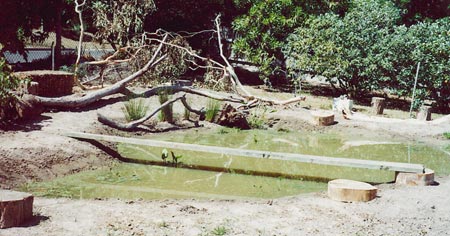
The humble beginnings of the Frog Watch Frog-friendly Garden of the Year 2002.

